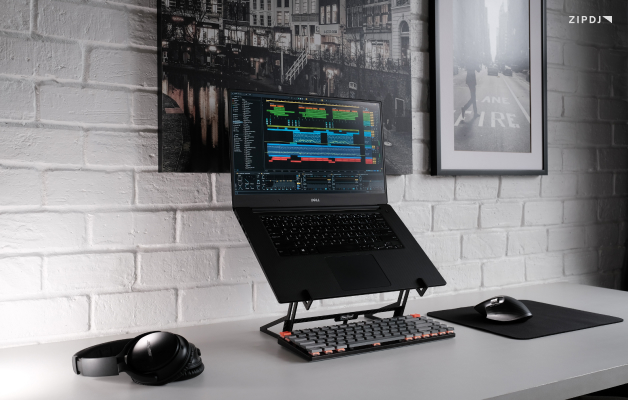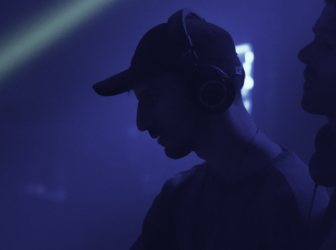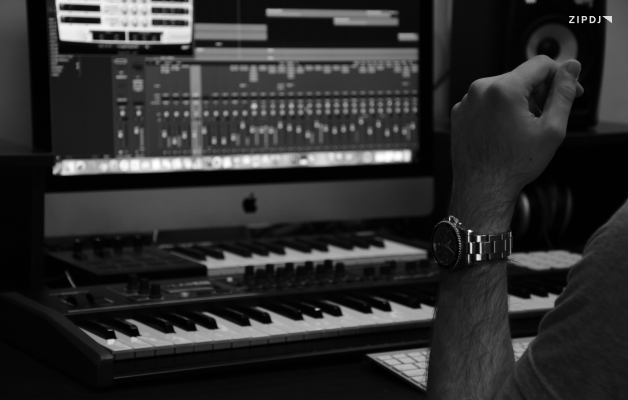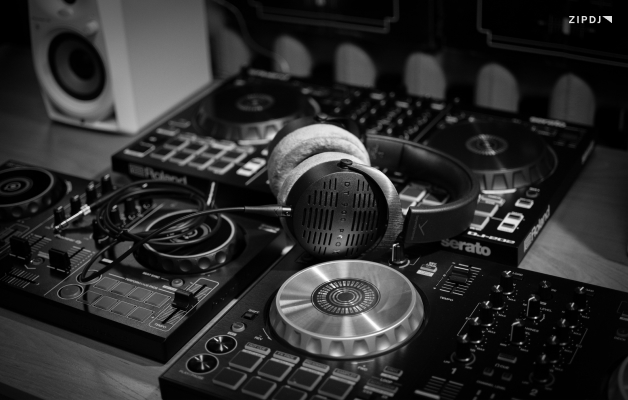How To Use DJ Samples To Elevate Your Mixes (Step-By-Step)

Learning how to use DJ samples to elevate your mixes is easy, with lots of great online resources and real-world authorities to build a sample library.
You can use a basic recording device to collect samples in your daily life or combine software and hardware to edit and manipulate sounds.
In this guide, we’ll discuss the various methods for creating and using samples in your DJ mixes to help you stand out from the competition.
How To Use DJ Samples To Elevate Your Mixes In 2024 (Step-By-Step)
With many different methods available for collecting and using samples, it is important to understand where to begin to keep everything organized.
We’ve covered a wide range of tools and resources for gathering samples so you can choose the best hardware and software and make the most of online catalogs.
So, now that you know our criteria, here’s how to use DJ samples to elevate your mixes in 2024:
Step 1: Use Your Software’s Sampler
For most DJs, the first port of call when considering integrating samples into their sets is the software they use to arrange and perform their mixes.
Whether you’re using Serato DJ, Traktor, or Rekordbox, you can use this software to introduce a range of samples into your sets that draw on your music library.
Introducing samples is a basic element when learning how to remix a song, and the principles for DJ sets remain largely the same as with music production.
Your DJ software will likely include many tools for adding samples to your mixes, each with its own creative possibilities to explore over time.
You can add a sample to slots ready for playback, use banks to store larger collections of samples to draw from and map them to various hardware controls.
You can also use the software to alter the sample volume and adjust how it behaves, including triggering it momentarily or for the whole sample.
DJ software also ensures your samples are correctly synced with the tracks you’re playing so your sample loops will match the rhythm.
Step 2: Use Your Smartphone Or Tablet
While software that allows you to integrate samples into your DJ sets is a versatile tool, you may want to expand the range of samples and sound effects you have available.
DJs who have been using DJ equipment for beginners may feel as if their options are limited, but their smartphone or tablet can be a valuable tool for sampling on the go.
A smartphone or tablet can be used as a portable recording device to capture interesting sounds to use as samples you hear while out and about.
Since everyone has a smartphone at their disposal, this can become an invaluable tool in your arsenal by allowing you to record sounds in all situations.
While the quality of the recording might not be optimal, it saves considerable money when compared to the cost of investing in a dedicated field microphone.
You can also enhance the sound effects in music production software to make the samples more viable for inclusion in your next DJ set.
Step 3: Use A Hardware Sampler
With the world of DJ technology in a state of rapid evolution, there’s no end of choice for additional hardware that can be used to create samples to use while DJing.
A classic example is a traditional hardware sampler, which can be plugged into your DJ setup and integrated to allow sample manipulation on the fly.
When choosing a hardware sampler, there are several popular options that are widely used by DJs to add sound effects and vocals to their live sets.
The Roland SP404 is an excellent choice for DJs who want to use samples that capture the distinct sounds of old-school electronic music into their track selection.
Another recommended hardware sampler that has lots of impressive features is the 1010music Black Box sampler, known for its powerful tools and portable size.
If you input your sampler into your DJ controller via one of the main channels, you can also use the EQ and effects on your mixer to manipulate how your samples sound.
While a hardware sampler is another piece of gear to consider when setting up your decks, the payoff in terms of how it can enhance each track is immense.
Step 4: Use Your Vinyl Collection For Sampling
While many current DJs focus primarily on digital resources to build up their collection of music to sample from, some prefer to stick with tried-and-trusted vinyl records.
There are thousands of vinyl releases available on websites such as Discogs and in second-hand stores that you won’t be able to find in digital formats.
This is particularly the case with limited white-label releases of electronic music tracks from the 1990s and 2000s before digital media took a firm hold of the industry.
If you’re learning how to become a DJ and are using vinyl records, you already have a wealth of resources that can be used for sampling.
You’ll need the correct cables to connect your turntable to a recording device, run it through your computer, and capture the audio with software such as Soundforge.
Once you’ve done this, you can load up your digital audio workstation of choice and get to work altering and manipulating the samples to achieve the desired results.
It’s a great way to discover rare music and sounds for your collection of samples and drop them in your next club set that other DJs may not have access to.
Step 5: Record Your Own Samples
Whether you’re learning how to make mashups or completely original tunes, having access to a microphone to record your own samples is essential.
This technique is just as useful for building a sample library for your DJ sets and will deliver much higher audio quality than using a smartphone.
You can take it out and about to capture a range of sounds from street life to the great outdoors for background noise or specific samples of anything else that interests you.
Recording your own samples with a good microphone also gives you the opportunity to collaborate with local artists and musicians in a studio-like setting.
If you know someone who can play an instrument, see if they’d be willing to come in for a short recording session so you can sample their performance.
Likewise, any vocalists you know can provide you with catchy singing samples that you can cut up, loop, or play in their entirety as part of your DJ sets.
The more samples you record over time, the bigger your sample library will become to help you play more inventive mixes that incorporate DJ samples.
Step 6: Invest In Sample Packs
Another common resource for DJ samples is purchasing sample packs online, which can be found for reasonable prices and cover a broad spectrum of genres.
You can find thousands of DJ samples in packs for all types of electronic music genres, from house and techno to trance and progressive house.
These sample packs are typically broken down into various categories, from single percussion hits to drum loops, synth stabs, and vocal acapella.
If you’re a hip-hop DJ, you can purchase lots of DJ samples covering a range of vinyl scratches, as well as vocal loops from iconic hip-hop tracks.
Drum and bass DJs can pick up various packs of DJ samples for the genre that include Amen breaks, snippets of MCs performing, and deep, booming basslines.
Building up a large collection of DJ samples from packs alone can become expensive over time, although some of the biggest vendors frequently hold sales.
With partnerships between brands, artists like Roland and Lionclad, and many other big names, the quality of packs featuring DJ samples continues to improve.
Step 7: Rip Samples From Websites
One of the most important things to consider before using samples in your sets is whether you risk violating copyright laws.
While the debate continues to rage about legalizing sampling, using samples can still pose a challenge if you don’t make any major alterations to how they sound.
With that said, there’s a huge amount of scope for discovering new samples by ripping them from websites to incorporate into your DJ sets.
Whether this is using plug-ins to rip audio from platforms such as YouTube or hunting down samples from more obscure sites, it opens up a world of opportunities.
If you do choose to rip samples from websites, you’re far less likely to run afoul of copyright laws if you take the time to manipulate and edit them before using them.
The more distinct you make it from the original source sample, the less likely your music and mixes are to be flagged by algorithms when you host them online.
It’s a great way to build an impressive sample library without spending any money, with thousands of potential sites where you can download samples of all types.
Step 8: Sign Up For Sample Sites
If your budget is tight and you don’t have the funds to invest in packs of DJ samples, you can pick up plenty of free samples by signing up for dedicated sample sites.
There are lots of DJ samples available on these sites that cater to all types of genres which you can quickly play alongside a track in your DJ sets.
You can find these free music samples on websites such as Looperman, Freesound, and SampleSwap, all of which are easy to sign up for and use.
There are also sample sites that provide access to more comprehensive free sample packs to help you find new material for your sets at no cost.
If you want to integrate more obscure sound effects into your DJ mixes, you can head over to archives such as the BBC Sound Effects library and explore their content.
Most of the samples available through these websites are royalty-free and legal to use in your own track productions, making them versatile resources to access.
Step 9: Enhance Samples With Music Production Software
Whether recording your own samples or utilizing the many different sample packs available online, you’ll need a digital audio workstation to edit them.
While learning how to use music production software can seem daunting, you can find lots of actionable advice on the best DJ forums to help you understand the basics.
Software such as Ableton, Cubase, and FL Studio allow users to edit and alter samples in a wide variety of ways to create something completely unique.
Basic tools allow you to speed up, slow down, or reverse a sample, matching it to the tempo of the DJ set you’re planning on integrating it with.
More advanced features you can use with a DAW include applying filters and effects to DJ samples, as well as fine-tuning the EQ, and adding compression.
The more you play with your music production software, the better the creative potential you’ll have when it comes to expanding your library of DJ samples.
It’s also a great introduction to music production more generally, which can pave the way for dedicated production and creating your first original track.
Step 10: Use Live Production Software
As the role of artificial intelligence in music continues to expand, the potential to use live production software is making DJ samples increasingly versatile.
Essentially bridging the gap between a digital audio workstation and a DJing tool, live production software allows for exceptional sample manipulation on the fly.
Programs such as Ableton Live have become a staple feature of many professional DJ setups, opening up a lengthy list of tools to use with samples in sets.
With Ableton Live, DJs can access the Session View and engage in real-time manipulation of all audio and MIDI clips that have been loaded into the platform.
DJs can also access the many built-in instruments, synths, and effects, creating a much more refined live music experience and a more dynamic approach to DJing.
Such live production software can be mapped to hardware controllers for a tactile mixing experience in which DJ samples and other effects interact with a given track.
This seamless integration makes live production software a must for more adventurous DJs who want as much creative scope as possible when using each sample in their set.
Summary
So, there you have it, our complete overview of the various ways you can integrate the best DJ samples into your DJ sets, from utilizing the right software to hunting down sample packs.
It’s an incredibly versatile way to bring more texture and dynamism to your DJ mixes, and you don’t need a huge budget to get started, with plenty of free samples online.
The more you experiment with samples and edit them in production software, the bigger your sample library will become as your DJ career continues.
Not a member ?
Join Today for Unlimited Music Downloads. Visit zipdj.com for more information.



